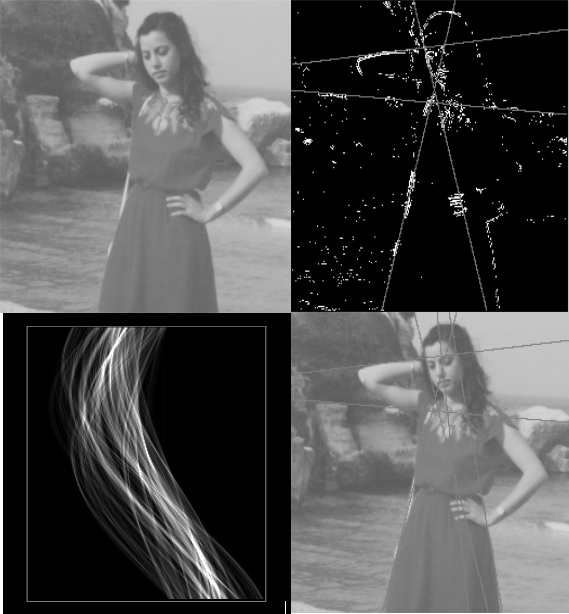The Hough transform and its applications in medical imaging
The advent of computers has radically changed the way of doing medicine. Every day, in increasing numbers, hospitals and medical institutes produce diagnostic images in digital format. From the images, useful data and information are collected to formulate a diagnosis, in a process where "machines" play a fundamental role.
In automatic image analysis, there is often the problem of identifying simple shapes, such as straight lines, circles or ellipses; the Hough transform is a tool that accomplishes this task.

It is essentially an "extractive" technique, the goal of which is to locate points of interest in the image with a certain accuracy. Unlike other methods based on local analysis (adjacency, orientation, gradient, etc.), the Hough transform is a global operator which, through a function and a set of parameters, identifies a well-determined shape.
The image then undergoes a real transformation process, it is first converted into grayscale, if necessary, then the pre-processing phase intervenes, which serves to prepare the image by highlighting the edges of the objects represented as organs and tissues. For this purpose, edging algorithms are generally used (such as Canny, Sobel, Roberts, Prewitt, etc.), or other types of filters (such as the Laplacian). Once the preparation phase is over, the algorithm can be used, the result of which will be intensity peaks in a parametric space that takes the name of Hough space.
Each peak reveals the possible presence in the image of the figure being investigated (a circumference, a straight line, etc.), which can be finally revealed by superimposing the latter with the initial image, carrying out the so-called "de-houghing".
Download the thesis (ita):
La trasformata di Hough e le sue applicazioni nell'imaging medicale.pdf
La trasformata di Hough e le sue applicazioni nell'imaging medicale.odt

Social links